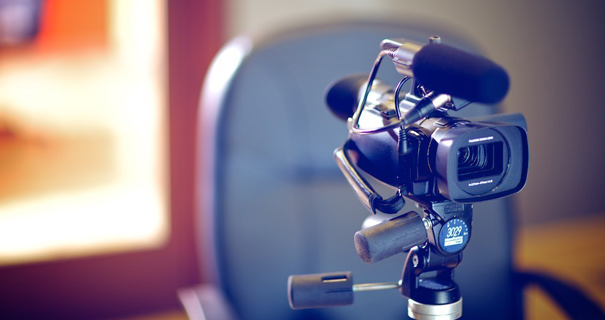The Power of Visuals in Trial Presentations for a Winning Argument
The integration of visuals in test discussions has arised as a crucial aspect in successfully connecting intricate debates to jurors. By making use of numerous types of visual help-- be it diagrams, pictures, or animations-- lawyers can enhance understanding and retention, ultimately forming the jury's perception of the case. This approach not only clears up complex narratives but additionally develops a psychological vibration that can influence decision-making. As we explore the subtleties of this strategy, it comes to be essential to think about how details sorts of visuals can make a significant difference in trial outcomes. What functional strategies might attorneys utilize to maximize this potential?
Relevance of Visuals in Trials
In several lawful settings, visuals play a vital duty in enhancing the effectiveness of test discussions. The assimilation of aesthetic components can substantially influence jurors' understanding and retention of complex info, consequently forming their assumptions and choices. Visuals, such as graphes, representations, and photos, can streamline elaborate narratives, making them extra accessible and compelling.
In addition, the human brain processes aesthetic details more effectively than message, which highlights the relevance of incorporating visuals right into legal disagreements. By translating dense legal ideas right into aesthetic layouts, attorneys can assist in more clear communication, making sure that bottom lines are not ignored throughout tests.
Furthermore, visuals serve to involve jurors on a psychological level, fostering a link to the case that words alone might fall short to achieve. The critical use visuals can evoke compassion, motivating jurors to think about the human elements of the instance.
Ultimately, the relevance of visuals in tests depends on their capacity to enhance clarity, improve juror interaction, and strengthen the story being provided. This powerful mix is important for crafting influential arguments that reverberate with jurors and affect the outcome of legal proceedings.
Types of Visuals to Make Use Of
Effective test discussions can substantially gain from a selection of aesthetic devices that deal with different elements of the situation. trial presentations. Making use of layouts and charts can effectively damage down complex info, making it a lot more digestible for jurors. For example, flowcharts can show the sequence of events, while bar chart might succinctly compare appropriate data factors.

Animations and simulations can likewise play an essential function, specifically in cases involving technological information or elaborate situations. These visuals can dynamically represent procedures or actions, offering clearness and engagement that fixed images might not attain.
Moreover, infographics incorporate text and visuals to summarize vital info effectively. They can present timelines, stats, and significant case look at this now factors in a visually attractive way, making it less complicated for jurors to comply with the argument.
Enhancing Comprehension and Retention

Enhancing understanding and retention during trial discussions is essential for making sure that jurors realize the crucial components of a case. Visual aids act as powerful tools in this regard, translating complex details into conveniently absorbable layouts. By using charts, diagrams, and infographics, lawyers can simplify complex information and highlight bottom lines that might or else be ignored.
Research studies have actually revealed that people preserve information significantly much better when it is presented visually. This is especially significant in a trial setup, where jurors may be overwhelmed by the quantity of evidence and statement. By purposefully integrating visuals, attorneys can guide jurors' focus to one of the most important aspects of the situation, strengthening their understanding and memory of the material presented.

Producing Engaging Presentations
Exciting jurors' attention during test discussions is necessary for sharing an engaging story. Involving presentations take advantage of visual elements to produce an unforgettable experience that reverberates with jurors. The strategic usage of graphics, computer animations, and videos can elucidate complex details, making it extra obtainable and relatable.

Additionally, incorporating narration strategies can enhance engagement. Presenting evidence in a logical series that builds emotional allure enables jurors to get in touch with the product on an individual degree. Varying presentation Read Full Report formats, such as integrating short video clip clips or interactive aspects, can additionally endure rate of interest and focus throughout the test.
Eventually, an interesting discussion cultivates a more extensive understanding of the instance, making it possible for jurors to better value the debates being offered and leading to a more favorable end result.
Situation Research Studies and Success Stories
Many study highlight the considerable effect of visuals in test presentations, demonstrating their ability to influence juror understandings and inevitably the end results of instances. As an example, a noteworthy situation including a personal injury case highlighted how using a 3D computer animation of the mishap scene made clear complicated information. Jurors reported feeling more enlightened and understanding, significantly guiding their decision for the complainant.
In one more circumstances, a company lawsuits situation made use of infographics to present monetary data and timelines, making detailed information available. The visual representation allowed jurors to comprehend the subtleties of the case better than spoken explanations alone. trial presentations. As click here now a result, the jury returned a verdict that went beyond the customer's expectations
The compelling visuals not just helped in producing doubt yet likewise reverberated emotionally with jurors, leading to an acquittal. These success stories underscore the requirement of integrating visuals into test discussions, as they improve understanding, retention, and eventually, the convincing power of lawful disagreements.
Verdict
In conclusion, the tactical incorporation of visuals in trial discussions dramatically enhances jurors' understanding and retention of intricate info. By making use of different kinds of visuals, lawyers can effectively clarify bottom lines and foster emotional connections with the audience. Engaging presentations, sustained by engaging study, show the profound influence that visuals can have on convincing communication. Inevitably, the power of visuals functions as an important element in attaining positive trial outcomes.